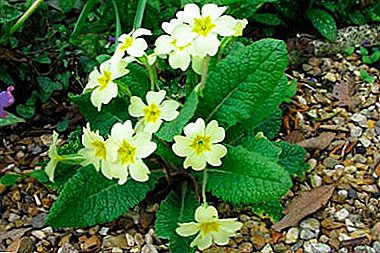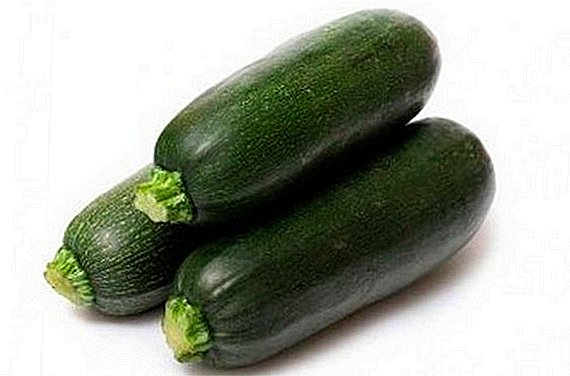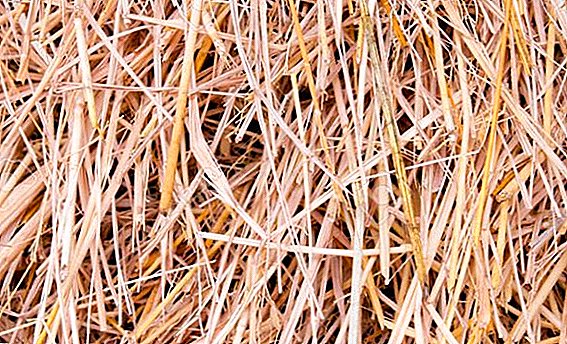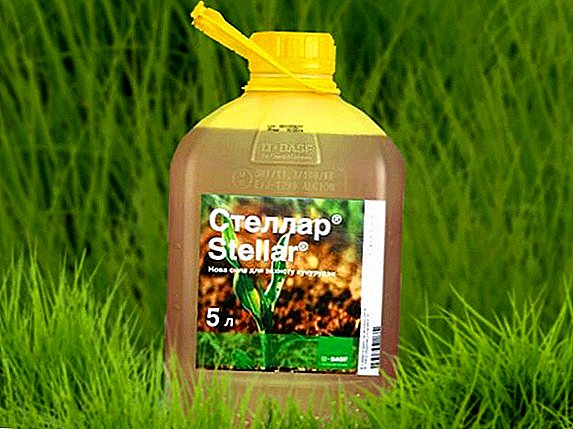
Although carrots are considered to be an unpretentious crop, in the process of their cultivation, if you do not follow certain rules, you may encounter problems of reducing the quality of the crop, its damage by diseases or pests, and even death.
If you know the causes of a particular problem, as well as know how to deal with it, you can manage to rectify the situation and by the end of the summer season get a great harvest of carrots.
You will learn what to do if the carrot is curled up, why it is curling, the tops turn yellow, and other problems arise. Understand what causes such problems.
The reasons why problems arise, what to do and how to handle?
Falls on a bed / falls tops

- If the tops of the plant darkens, dries and falls off, it is possible there was too thick landingespecially if it coincided with heavy rains. To remedy the situation, plants can be treated with Oxyhom, a fungicidal powder based on copper oxychloride and oxadisyl.
It is used in dry, windless weather in the morning or evening hours - 20-30 g of powder is mixed with 10 l of water and the plants are sprayed.
- Also the cause of the fall of carrots can be the invasion of carrot flies, which begins to lay its larvae in the ground in the spring. As one of the methods of struggle used planting next to carrots onions, the smell of which deters the fly.
If the carrot has already been attacked by a fly, you can make a mixture of ash and tobacco, and sprinkle it with powder or red pepper between the rows. Also suitable and industrial insecticides, among them "Aktellik", "Intavir", "Zemlin", "Basudin" and others.
If the plant turns yellow
Shoots

The first inspection of the beds with carrots should take place as soon as 3-4 leaflets appeared on the first shoots. Already at this moment you can see if there are any problems with the plants.
Leaves

Yellowing of the tops of an already grown plant may also begin. As a rule, the causes of yellowing of seedlings and tops are the same:
- Dry weather or night frosts - since it is impossible to predict weather conditions, carrots should be planted in several stages.
- Excessive or insufficient watering - before the first shoots appear, carrots need to be watered often in small volumes. When the roots began to grow, you need to water less often, but water consumption will be more.
It is important to focus on the state of the soil - clay soils are watered less frequently, sandy ones more often.
Watering should be done from watering can with separated water, as the roots, especially in hot weather, do not absorb cold water. In addition, due to cold water, the partial dying off of the roots occurs. Also required watering after thinning. - Excessive or insufficient feeding - carrots need to be fed 3-4 times per season.
- The first time fertilizers are applied approximately 20 days after emergence of shoots (when there are three true leaves) or after the first thinning.
One of the options for feeding can be the following recipe - in 1 liter of water, stir 1 tsp. urea, 1 tsp. Kalimagnezii and hood of 1-2 tbsp. l superphosphate (the hood is prepared the day before feeding - superphosphate is poured into a liter of hot water, stirred for an hour, defended and the upper translucent layer is taken).
- 2-3 weeks after the first feeding (when 5-7 true leaves have been formed on the plants) a second feeding should be carried out with the help of complex fertilizer - nitrophoska, nitroammofoska will do.
- The third dressing is carried out in the stage of active growth of root crops. Preference should be given to organic fertilizers - for example, dry ash or infusion of ash (2 cups of ash insist in 1-2 liters of boiling water for two days, then bring the resulting solution to a volume of 10 liters). Pre-beds are watered abundantly, fertilizers are added to the aisle and are loosened shallowly.
- Also, 2-3 weeks before harvesting, it is possible to carry out a final feeding with the help of infusion of ash or potassium sulphate solution (consumption 2 tbsp. Of fertilizer per 10 l of water).
- The first time fertilizers are applied approximately 20 days after emergence of shoots (when there are three true leaves) or after the first thinning.
- Incorrectly selected carrot varietywhich is not suitable for cultivation in a specific climatic zone - preference should be given to proven varieties of carrots, as well as carefully study the characteristics of a particular variety.
- Abundance of weeds. Weeds limit the plant growth zone.
- Infected seeds - to disinfect the seeds, they should be heated before planting at a temperature of 40 ° C for at least 30 minutes. It can also be treated with a solution of potassium permanganate.
- Contaminated soil - Carrots cannot be planted on the same beds on which onions or cabbages grew last season, since these crops have the same pests and diseases. In addition, carrots can be planted in the same place only after 3-4 years.
- Diseases and pests - carrot fly, scoops and lisobloshki are often the cause of yellowing and wilting tops. Insects gnaw up roots and feed on carrot juice. To control pests suitable as folk remedies (an infusion of onion peel, treatment with ashes with tobacco or red pepper), and insecticides.
Inside the white or yellow core, not orange

- The reason for this phenomenon may be excess nitrogen in the absence of potassium and phosphorus. It is necessary to reduce the use of fertilizers containing nitrogen, and increase the feeding with potash-phosphate fertilizers and ash.
- Besides, the reason may lie in not very high-quality seeds. In this case, it is worth changing the place of purchase of seeds.
Dense shoots are formed

This is a result of excessively dense planting, therefore, in order to avoid too thick shoots, the thinning procedure should not be neglected. And it is necessary to begin to do thinning with the advent of the first two leaves.
You can also at the stage of planting carrots use one of the following methods:
- plant seeds on tapes (where the seeds are already glued at a distance of 4-5 cm from each other);
- mix seeds with sand;
- buy a special planter;
- use a marker (wooden plank with teeth attached at a certain distance, which, when you press the beds, leave grooves for the seeds).
It cracks in the ground

- Irregular watering can lead to cracking carrots. Often gardeners who have the opportunity to take care of the garden only on weekends, try to water the beds that have dried up for a week as much as possible. As a result, increased pressure is created in the soil - the roots do not stand up. Torrential rains also often cause cracking carrots.
- Surplus of nitrogenous fertilizers in the summer period can also cause cracking of root vegetables. It is worth remembering that nitrogen is needed by plants in the initial stage of growth, subsequently the plant needs potassium and phosphorus.
- It is possible that the carrots are ready to be harvested and start overripe - Do not delay the harvest.
Not sweet and not juicy

- Usually, late varieties have less sweetness and juiciness. Therefore, if you want to eat sweet and juicy carrots, you should prefer early varieties.
- Insufficient watering may be another reason for the deterioration of the taste of carrots.
- Excess nitrogen and potassium, phosphorus and boron deficiency can lead to a decrease in sugar in carrots. Filling up the lack of macro- and microelements, as well as fertilizing with manganese sulphate can help raise the level of carotene and sugar.
Curly / curled / twisted

- Often precisely pests (leaflet, carrot fly or aphid) are guilty of the fact that carrots began to spin.
- However, plants may lack potassium or magnesium (in this case, the leaves curl in June and become bluish in color). To remedy the situation, you can spray the infusion of ash tops.
Carrot grew ugly: horned, clumsy or hairy

- Often unprepared soil (lumps and stones in the soil) leads to deformation of root crops.
- Excessive or insufficient watering (due to drought, carrots release additional thin roots in search of moisture).
- Incorrect feeding (carrots do not like fresh manure, as well as potassium chloride and potassium salt) also lead to the curvature of carrots.
We offer you to watch a video about why carrots can grow ugly:
Very small

Causes of small carrots can be:
- Too hot weather.
- Features of the variety - in the description of each variety the size of the mature root crops is written. Medium sized carrots should be preferred.
- Lack of the sun - carrots are very light-loving plants, so it should be planted on areas that are constantly in the light.
- Sour soil:
- firstly, acidic soil contributes to the growth of pest activity and the spread of disease;
- secondly, it can cause small root vegetables.
For the deoxidation of the soil, several methods are suitable - the use of ash, dolomite flour, carefully crushed chalk, hydrated lime or green manure.
Each method has its own characteristics - for example, Domolite flour additionally enriches the earth with magnesium, calcium and other useful components.while at the same time from an environmental point of view is absolutely safe. Ash works best in combination with other drugs, since it alone does not compensate for calcium deficiency.
What to do to avoid a bad harvest?
Although the list of problems arising in the process of growing carrots is quite extensive, the ways to deal with them are basically similar:
- the right choice of carrot varieties;
- preparation of seeds and soil for planting;
- compliance with the rules of crop rotation;
- fertilization of the soil both at the stage of preparation for planting carrots and the further introduction of top dressings at different stages of the growth of root crops;
- optimal watering;
- timely thinning and weed control;
- prevention of pest and disease control at the stage of soil preparation, as well as the timely use of insecticides (both folk and industrial) in the event of plant contamination;
- timely harvesting.
Carrots are considered quite unpretentious culture, however, there are a number of features that should be considered when growing it. Timely monitoring of the condition of the leaves and growing root crops can help to quickly fix the problems that have arisen and take steps to resolve them. In addition, preventive measures are important for high-quality harvest, which will often help to avoid problems in the future.












